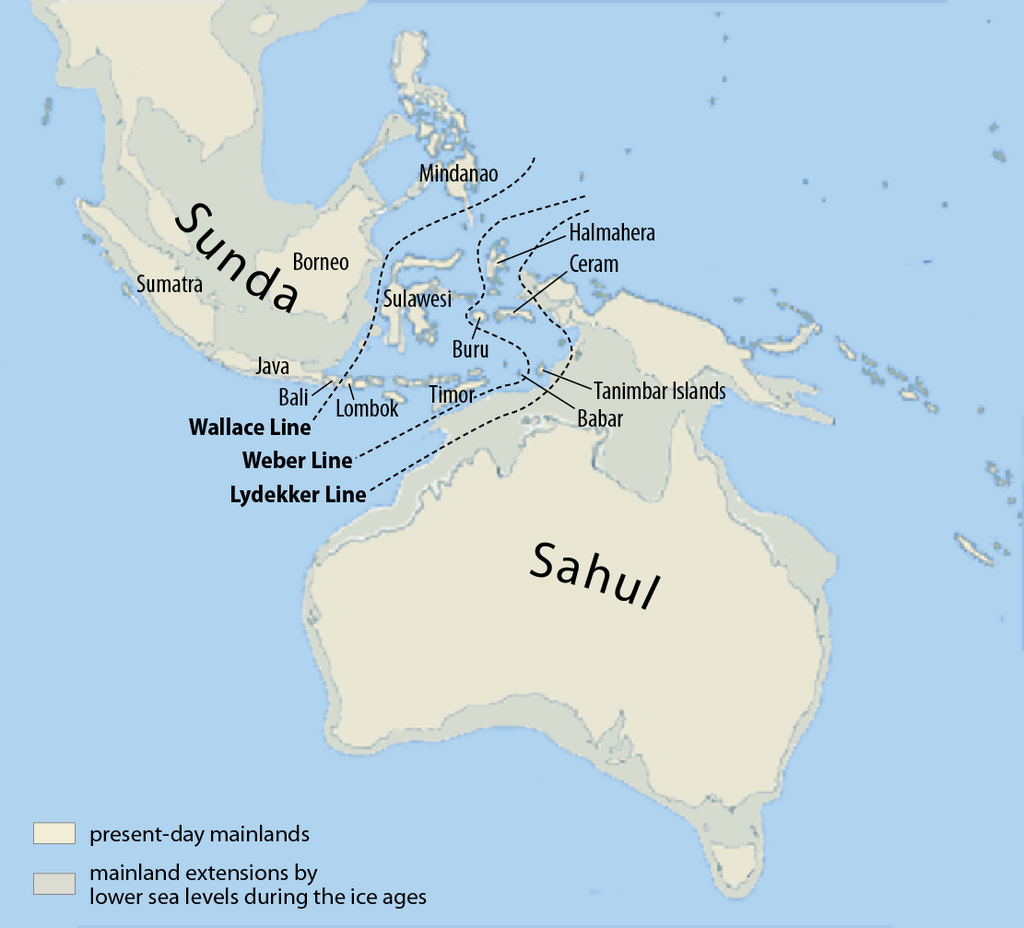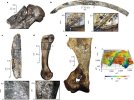When it comes to archaic hominin DNA you make a great observation about the way the modern human genome has selected against DNA from archaic humans such as Neanderthals. We really do not know how much of the human genome was Neanderthal material 50,000 years ago, to say we are 2-3% Neanderthals gives the misleading impression that no much mixing occurred - we really do not know that at all as so much material may have been selected against over that time.
Humans seem to go back at least 3 million years in a form readily recognisable to us, before that we might struggle to see them as anything other than another primate relative. But then, we really do not know if we have found any fossils from our ancestors beyond 3 million years ago, scientists are growing more sceptical about this and many doubt Australopithecus is a direct ancestral genus to Homo. We may simply not have found any fossils from humans much beyond the era of Homo erectus and Homo habilis - perhaps they looked pretty much like these species. I made a very different argument in my book, suggesting Australopithecus were perhaps early Homo, I would remove that in a future edition.
All good points.
One thing that occurs to me is that the DNA based claims rely very much on the separation from apes and the "dna clock" that produces a timing for that event. But, when one considers demographics, genetic drift, for all we know, that split represents just ONE group that contributed to the gene pool. In other words, just as the Eve hypothesis has proven to be wrong because of the later finding of archaic "ghost populations" in dna, so might that split also prove to be wrong. See mainstream view here: https://phys.org/news/2016-02-humans-apes.html
One thing that exercises my mind is this: the so-called human lineage AS IT IS NOW KNOWN is closest to chimps and gorillas which are found only in Africa. BUT, just above this in the tree is a common ancestor of humans, chimps and gorillas that was also ancestral to Orangutans, Gibbons and Siamangs, all of whom are found in East Asia. Go another step up and there is the common ancestor of Old World monkeys (OWM), and New World Monkeys (NWM).
Now, one might assume that the OWMs and NWMs separated at the time of the continental splits UNLESS we are to assume some other means of travel. Ciochon and Olsen suggest that they traversed the very small Atlantic by Island hopping not long after this divide was initiated. This article tells us: https://phys.org/news/2006-05-continents-geology-picture.html
About 525 million years ago, that land mass broke apart, with North America on one side and South America, Africa and the small island pieces on the other. The two plates drifted apart, forming the Iapetus Ocean.
Twenty-five million years later – at the time of the first fish and land plants – the strip of land that used to be the small islands broke off South America and Africa and began moving across Iapetus towards North America. This movement closed the Iapetus Ocean while at the same time opening the Rheic Ocean.
So, effectively, it is saying that the continents split that long ago... way longer in the past than is possible for our NWM and OWM split. The first incipient primates supposedly did not appear until after the dinosaurs were wiped out 65 million years ago and needed time to develop to primate stage before the split.
That leads to a rather pressing question: how did NWMs get there?
Coming back to our African and East Asian split, the brachiating apes that include man, and do NOT include NWMs, it is proposed by one group that some apes left Africa and went to East Asia (trying to preserve the African origin of everything) and others, that the apes of Africa traveled there from East Asia. Gribbin and Co. suggest this view (and it is attractive). It does seem that, since the Gibbons, Orangs, Siamungs, etc, are higher on the tree, where they are found is most likely the origin of the ones found in Africa.
But that leads to the problem of the previously mentioned NWM and OWM split: it almost seems as though the simians came to East Asia via an Eastern route - from South America to East Asia - rather than going from Africa to South America. Either that, or the NWMs went to South America from East Asia the same way African apes went there from East Asia.
It does seem that our ancestors lived by the mantra of "If it ain't broke, don't fix it." We can assume either what they had was sufficient for their needs and wants, they had other technology that has not survived in the archaeological record or they lacked mental dexterity to move beyond the tools they had conjured up. This raises the question of why they then did change tool technology, either the situation conspired to bring about new needs or their brains changed in some significant way and they were able to think in new directions. Could this be deliberate upgrades by external forces (such as a meddling ET visitor)? I rather suspect you are correct though, that stone tech was "just a small aspect of their reality" we just can't know what else they were doing/using.
Well, even though I deal with such issues as strong possibilities (ET meddling), I try to find real world explanations for things first. It seems to me that just tracking the movements of species and groups is sufficient to suggest that there was a lot more going on than is dreamed of in our philosophies!
A couple of things that may be significant: the Neoteny change. This could have happened to a single individual via mutation, probably a male. He could then pass this mutation on via numerous females, and presto, you have the first little band of incipient humans. After initial efforts to "get along" with their more apeish parents and grandparents and cousins and such, they figured out that they were too different so they took themselves off and speciation was on the way.
Second, it has been noted that the first blonde/white skinned type was found near Lake Baikal.
Analysis of ancient DNA data shows that western European hunter-gatherers around eight thousand years ago had blue eyes but dark skin and dark hair, a combination that is rare today. The first farmers of Europe mostly had light skin but dark hair and brown eyes - thus light skin in Europe largely owes its origins to migrating farmers. The earliest known example of the classic European blond hair mutation is in an Ancient North Eurasian from the Lake Baikal region of eastern Siberia from seventeen thousand years ago. The hundreds of millions of copies of this mutation in central and western Europe today likely derive from a massive migration into the region of people bearing Ancient North Eurasian ancestry..." Reich, p. 96.
Now, Carleton Coon talks quite a bit about Neoteny and his work is worth reading for that, alone, I think. I noted a comment in the book that arrived yesterday where he suggests that blue eyes and blondification are FURTHER neoteny-related mutations. He also talks about the rounding of the skull as a neoteny related process and that the roundification of skulls in most groups around the world into modern times is part of this process. His discussion of the types and processes of evolution that can be observed in emigrants from one place to another is well worth the price of the book!!!
Anyway, Neoteny is the best explanation for the change in human behavior that I've seen. (Also check out "The Dopaminergic Mind"). Whether or not these mutations were induced, we can't say, but we can suspect it is possible, even probable. Geeze, it IS a process of "domestication", after all!!!
It is interesting you mention Cremo's book, I have had it flagged t me many times over the years, and again since publishing the book. I finally downloaded a pdf version a couple of weeks ago and skimmed it to get a feel for the sources he uses. What I noticed right away was that despite being published in 1993, almost every source he used came from research done between 1800 - 1950, a period on which there was wild speculation by fantasists passing for scientists, mostly ideologically driven racists and religious nuts, all sharing from the same lack of meaningful training and absence of scientific dating methods. That Cremo chose to base his 1993 boo on these out of date and spurious reports suggests he was agenda driven. He could have referred to work carried out between 1980 and 1993 and I would excuse him, we have to conclude he wanted to use wacky reports that made wild baseless claims and these mostly exist if you look back 100 years or so. As you know, I did everything possible to use entirely cutting-edge studies, I did not try to build a case from long-abandoned models and speculations. I consider Cremo's book worthless on this basis and entirely written to support his stated Hindu beliefs. This is sad because that book is so revered and very often promoted to be the best in the field of non-academic human origins research!
I wouldn't toss out Cremo so quickly if I were you. That is NOT the impression I took away from a fairly careful reading of the abridged edition, and now I have the unabriged and have made it through about half of it. There's some serious stuff there and just because it is older doesn't make it less useful. Remember, all the giant skeletons found and examined by Smithsonian peeps that are now denied? And Cremo produces some good modern evidence, too as well as testimony from more modern workers who "buried" findings because they knew it would ruin their careers.
Additionally, with the material produced in Reich's book, even if he attempts to spin it, is very useful to me because I can go and read the papers if I need to, and I can read between the lines. As I pointed out, his maps do NOT match his words and his conclusions don't match the data. At least he presents the data honestly and clearly.
Finally, now being able to see from Reich that Wolpoff was quite right, it is easier to read Coon and see that he, too, was on the right track on many things. I just make notes in the margins when more recent data contradicts or clarifies... and he's very right a lot of the time!
Sometimes treasures are found in a LOT of mud!


